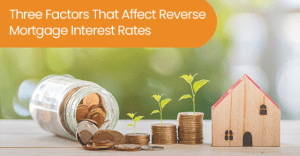Understanding Current Mortgage Rates: A Comprehensive Guide
Unlock the secrets to today’s mortgage rates! Get expert insights, compare lenders, and find the best rate for your dream home. Don’t overpay – start your search now!
The question, “What are current mortgage rates?”, is a common one, especially for those considering buying a home or refinancing their existing mortgage. Understanding current mortgage rates is crucial for making informed financial decisions. These rates fluctuate constantly, influenced by various economic factors, making it essential to stay updated. This comprehensive guide will delve into the intricacies of mortgage rates, helping you navigate this complex landscape.
Understanding the Basics of Mortgage Rates
Mortgage rates are essentially the interest rate you pay on your home loan. This rate, expressed as a percentage, determines the amount of interest you’ll accrue over the life of your loan. Lower rates mean lower monthly payments and less interest paid overall, while higher rates result in the opposite. It’s crucial to remember that the stated rate is often just the beginning of the story. Various fees and closing costs can impact your overall cost.
Factors Influencing Mortgage Rates
Several factors contribute to the constant fluctuation of mortgage rates. The Federal Reserve’s monetary policy plays a significant role. When the Fed raises interest rates, it typically leads to higher mortgage rates, and vice versa. Economic indicators such as inflation and unemployment also influence rates. Strong economic growth can sometimes push rates up, while economic uncertainty might cause them to fall. The overall health of the housing market also plays a part, with high demand potentially increasing rates.
Beyond macroeconomic factors, your individual circumstances significantly influence the rate you qualify for. Your credit score is a primary determinant; a higher credit score typically translates to a lower interest rate. Your debt-to-income ratio (DTI) is another crucial factor. A lower DTI, indicating less debt relative to your income, generally leads to better rates. The type of mortgage you choose, such as a 15-year fixed-rate or a 30-year adjustable-rate mortgage (ARM), also impacts the rate.
Types of Mortgages and Their Rates
The mortgage market offers a diverse range of options, each with its own set of rates and terms. Understanding these differences is crucial for selecting the best fit for your financial situation. Fixed-rate mortgages offer predictable monthly payments throughout the loan term, providing stability and financial planning ease. Adjustable-rate mortgages (ARMs), on the other hand, have interest rates that adjust periodically, based on market indexes; This can lead to lower initial payments but introduces uncertainty into your long-term budget.
Fixed-Rate Mortgages
Fixed-rate mortgages are a popular choice for their predictability. The interest rate remains constant throughout the loan’s life, allowing for easier budgeting and financial planning. While they may initially offer slightly higher rates compared to ARMs, the stability they provide can outweigh this difference for many borrowers. The term of the loan, such as 15 years or 30 years, also affects the monthly payment and overall interest paid. Shorter-term loans typically have higher monthly payments but lower total interest.
Adjustable-Rate Mortgages (ARMs)
ARMs offer potentially lower initial interest rates compared to fixed-rate mortgages, making them attractive to some borrowers. However, the interest rate adjusts periodically, typically annually, based on a market index. This introduces a degree of uncertainty into your monthly payment, which can be a significant concern for those on a tight budget. It’s essential to carefully review the terms and conditions of an ARM before committing to it, understanding the potential for increased payments over the loan’s life.
Finding the Best Mortgage Rate
Securing the best possible mortgage rate requires careful research and comparison shopping. Start by checking online resources that provide current rate information. Many financial websites and mortgage lenders publish up-to-date rate data. However, remember that these are just general guidelines, and your individual rate will depend on your credit score, debt-to-income ratio, and other factors.
Next, shop around and compare offers from multiple lenders. Don’t settle for the first offer you receive. Contact several lenders – banks, credit unions, and mortgage brokers – to obtain multiple quotes. Pay close attention to not just the interest rate but also to closing costs, fees, and other associated charges. These can significantly impact the overall cost of the mortgage.
Tips for Improving Your Chances of a Lower Rate
- Improve your credit score: A higher credit score significantly improves your chances of getting a better interest rate.
- Reduce your debt-to-income ratio: Lowering your debt will make you a less risky borrower.
- Make a larger down payment: A larger down payment reduces the lender’s risk, potentially leading to a lower rate.
- Shop around and compare offers: Don’t settle for the first offer you receive.
- Consider a shorter loan term: Shorter-term loans usually come with lower interest rates.
Understanding APR and Other Fees
The Annual Percentage Rate (APR) is a crucial factor to consider when comparing mortgage offers. It represents the total cost of the loan, including the interest rate and other fees. It provides a more comprehensive picture than the interest rate alone. Closing costs, points, and other fees can significantly add to the overall cost of your mortgage. Points are prepaid interest, often used to buy down the interest rate, but they add to your upfront costs.
Closing costs include various fees associated with processing your loan, such as appraisal fees, title insurance, and loan origination fees. These can amount to several thousand dollars, so it’s essential to factor them into your budget. Carefully review all fees and charges before signing any loan documents. Understanding these costs is vital for making an informed decision and avoiding unexpected expenses.
Hidden Costs to Watch Out For
- Loan origination fees
- Appraisal fees
- Title insurance
- Escrow fees
- Prepaid interest
The Importance of Pre-Approval
Getting pre-approved for a mortgage before you start house hunting is highly recommended. Pre-approval gives you a clear understanding of how much you can borrow and what your likely interest rate will be. This empowers you to shop for homes within your budget and makes your offers more competitive. Lenders often prioritize buyers who are pre-approved, as it demonstrates financial readiness and reduces their risk.
The pre-approval process involves providing the lender with your financial information, including your income, credit score, and assets. They will then assess your creditworthiness and determine how much they are willing to lend you. This process provides you with a solid foundation for navigating the home-buying process with confidence and clarity. It streamlines the overall process and strengthens your negotiating position when making an offer on a property.







